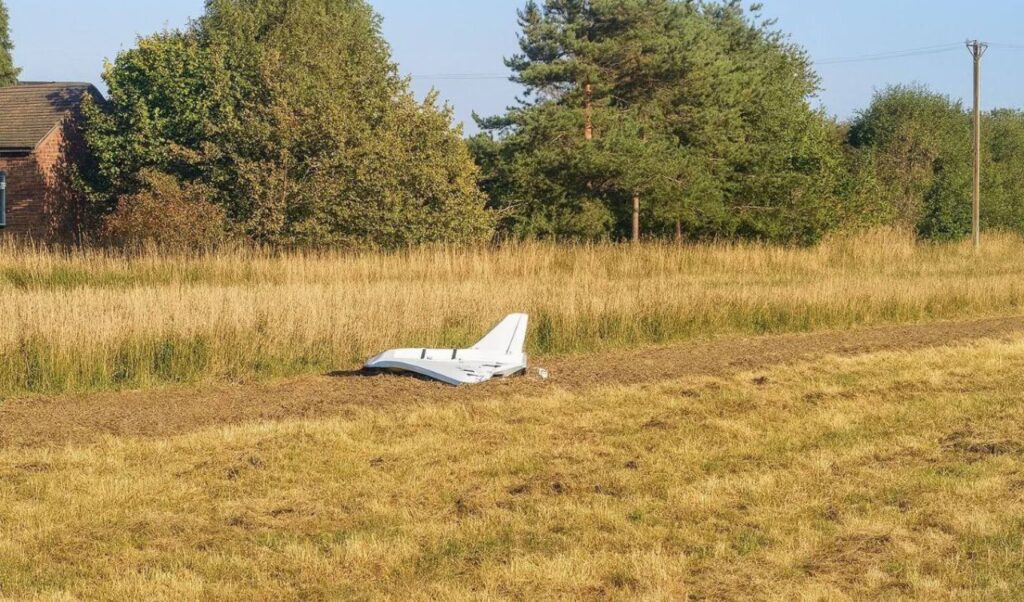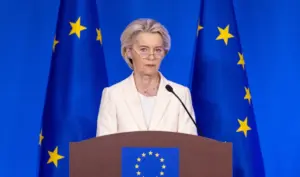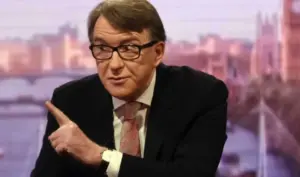An unprecedented escalation, while the war in Ukraine rages on, was the invasion of Russian drones – 19 in number, according to Donald Tusk’s announcement – into Poland, with Western media seeing that behind Moscow’s move there is a clear message from Vladimir Putin, summed up in the phrase “I won’t back down.”
Read also: Welt: “Russian drones intended to hit NATO base inside Poland”
New York Times after Russian drone invasion of Poland: “Putin’s message to Ukraine, Europe and Trump: I won’t back down”
The New York Times analysis indeed condenses to exactly this: “Putin’s message to Ukraine, Europe and Trump: I will not retreat,” reminding that yesterday’s developments with the violation of Warsaw’s airspace followed the escalation of Russian bombardment on Kiev, with the “silence” that followed the first weeks after the Alaska Summit being succeeded by the intensification of strikes (on Sunday the harshest barrage against Ukraine took place) and the Russian president’s statements in Vladivostok about “legitimate targets,” speaking about the possible presence of Western armed forces on Ukrainian soil.
Beyond what is unfolding in the Ukrainian theater of operations (where the Russian president sends messages that Kiev does not have reserves capable of continuing to resist vigorously), there is also Europe: Vladimir Putin, the NYT reminds, has referred to European supporters of Kiev in disparaging terms, characterizing them from Beijing (where he also attended China’s parade, alongside Xi Jinping) as a “war party” that wants to fight Russia using “even the last Ukrainian.” Regarding the American president, the New York Times notes, “Putin has not stopped praising Trump, whom he considers a key factor in achieving a peace agreement on Russia’s terms. However, his military actions test Mr. Trump’s patience, provocatively urging him to implement his threats for a tougher stance against Russia,” as it characteristically writes.
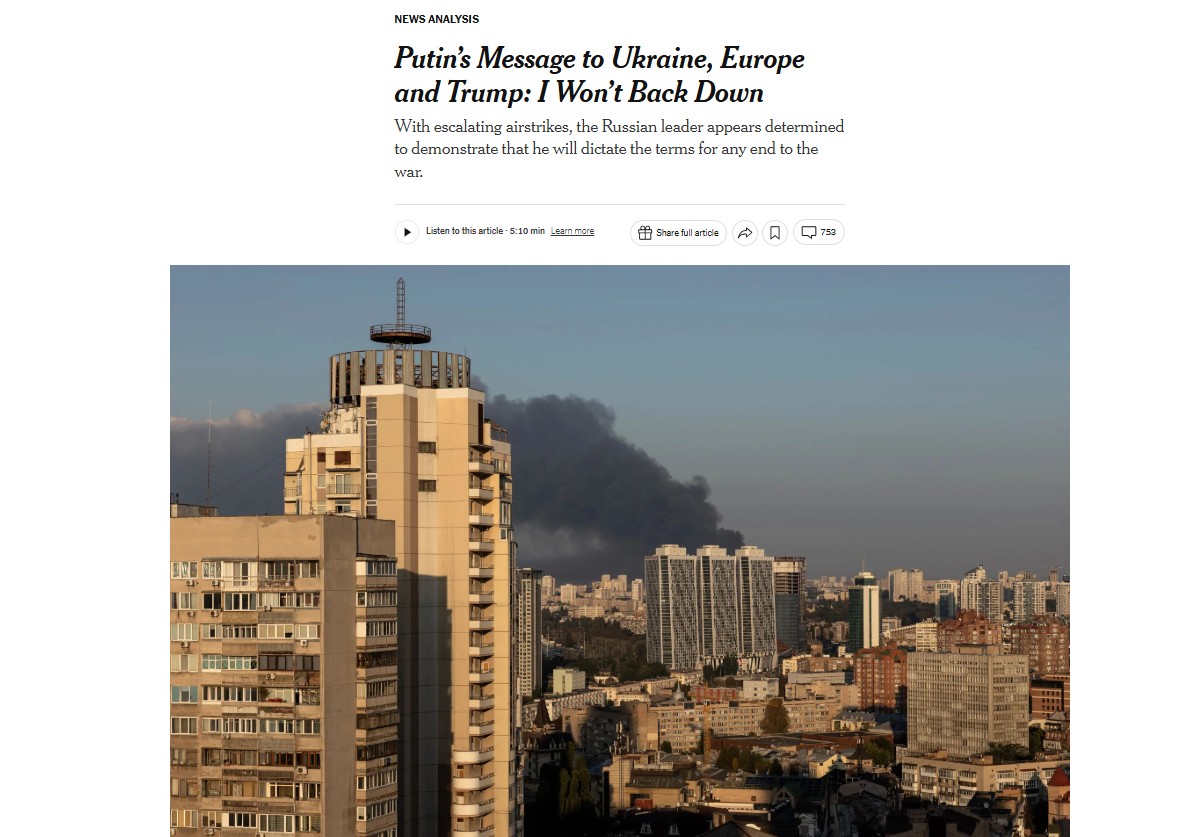
As a consequence of the above, the invasion of Russian drones was noted, with Belarus and the Russian defense ministry attempting to downgrade it as an event, without however the statements about “GPS interference” (see Minsk’s position) or about the absence of intention for any attack on Poland, since the plan was for the drones to attack western Ukraine (see the Russian defense ministry’s position) reducing Warsaw’s threat perceptions, which already requested an emergency UN Security Council meeting, while requesting activation of NATO’s Article 4, which provides for immediate consultations in the Organization’s Council when “the territorial integrity, political independence or security of any of the parties is threatened.”
CNN on Russian drone invasion of Poland: Putin put NATO in the crosshairs – What comes next?
On the same wavelength is CNN’s analysis, with the American outlet agreeing that this was hardly some mistake. The flight of unmanned aircraft within Polish airspace shows that “the response must be given by the alliance in an unprecedented phase of its history.” The analysis states that “Trump has undermined the foundations of security guarantees on which Europe relied for decades. This led to a key US goal: increasing commitments for European defense spending. But it has also undermined the basic principle of transatlantic security – that if you attack a European NATO member, you guarantee an American military response. This may still hold, but the assumption in that phrase is the point from which Putin flew more than a dozen drones last night,” the American outlet notes, despite assurances from Washington and US Ambassador Matthew Whitaker that “we will defend every inch of NATO territory.”
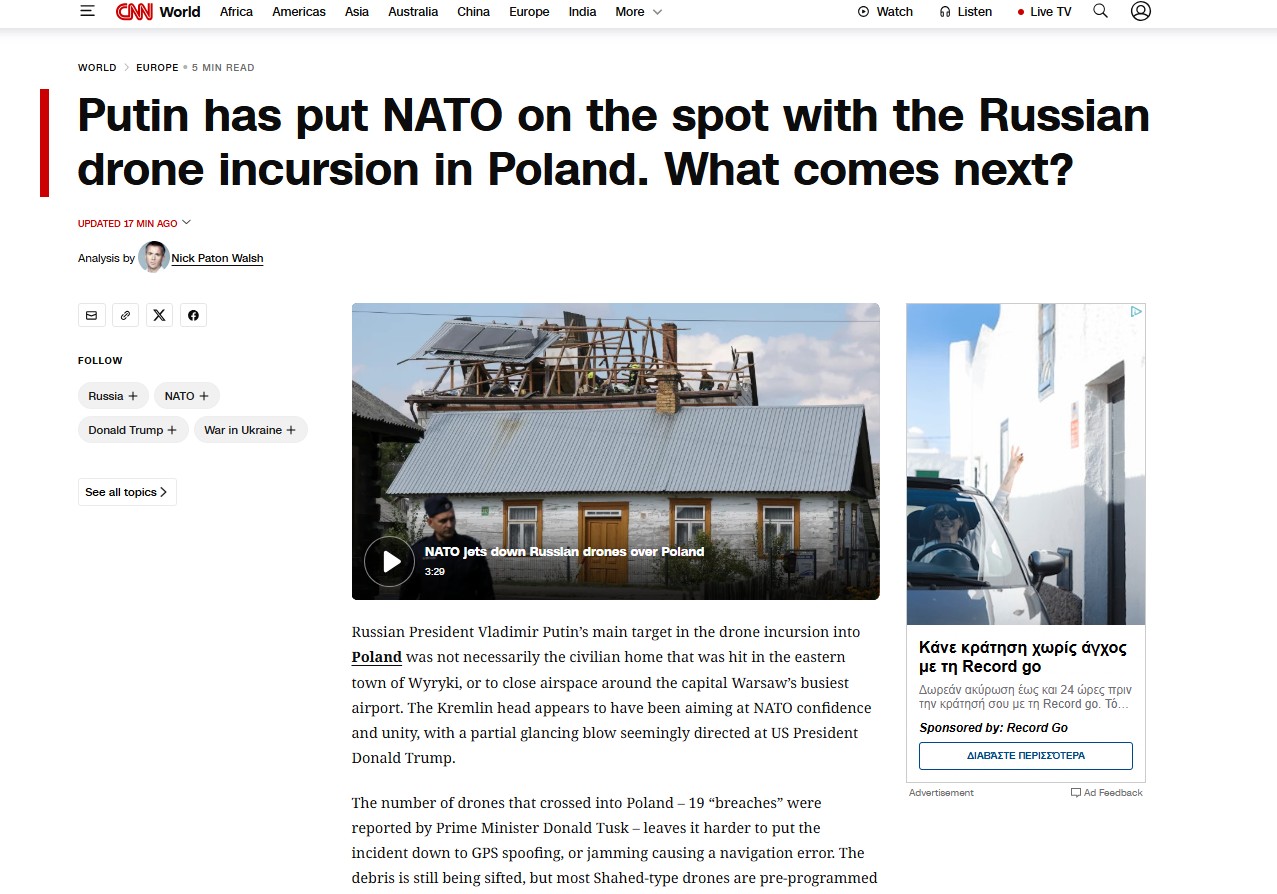
And it continues: “After this month’s Tianjin summit and the remarkable scenes of friendship between China’s Xi Jinping and India’s Narendra Modi, Putin may be feeling emboldened and able to escalate – as he has done in recent days – with significant economic and geopolitical support behind him,” which shows his possible choice to proceed with this move.
Sky News: Two reasons behind Russian drone invasion of Poland
For his part and moving along the same wavelength, Sky News military analyst Michael Clarke sees two reasons behind the Russian drone invasion of Poland:
“One was to send a message to Western European governments that any idea of deploying European forces to Ukraine as part of some ‘assurance force’ in case of a ceasefire agreement would be dangerous. The Russians constantly state that any Western reaction helping Ukraine increases the risk of war in Europe – Moscow’s stance is very consistent on this issue. Whatever Europeans say or do that Moscow dislikes is met with the idea that it could cause war with them.”
“The other reason,” continues Michael Clarke, “is that Russia obviously intends long-term to challenge NATO in the air, at sea and on land, up to the limit of open military hostility – in other words, up to the limit of NATO’s ‘Article 5.’ Its goal is to normalize these kinds of activities, so that the boundaries of Article 5 become unclear and harder to define. Then NATO will be much weaker – especially if the US has essentially withdrawn from its European allies.”

